Peter Suciu tells us their story.
These flattops would serve in the Pacific as floating airfields that helped the U.S. defeat the Empire of Japan.
The plan had its pros and cons.
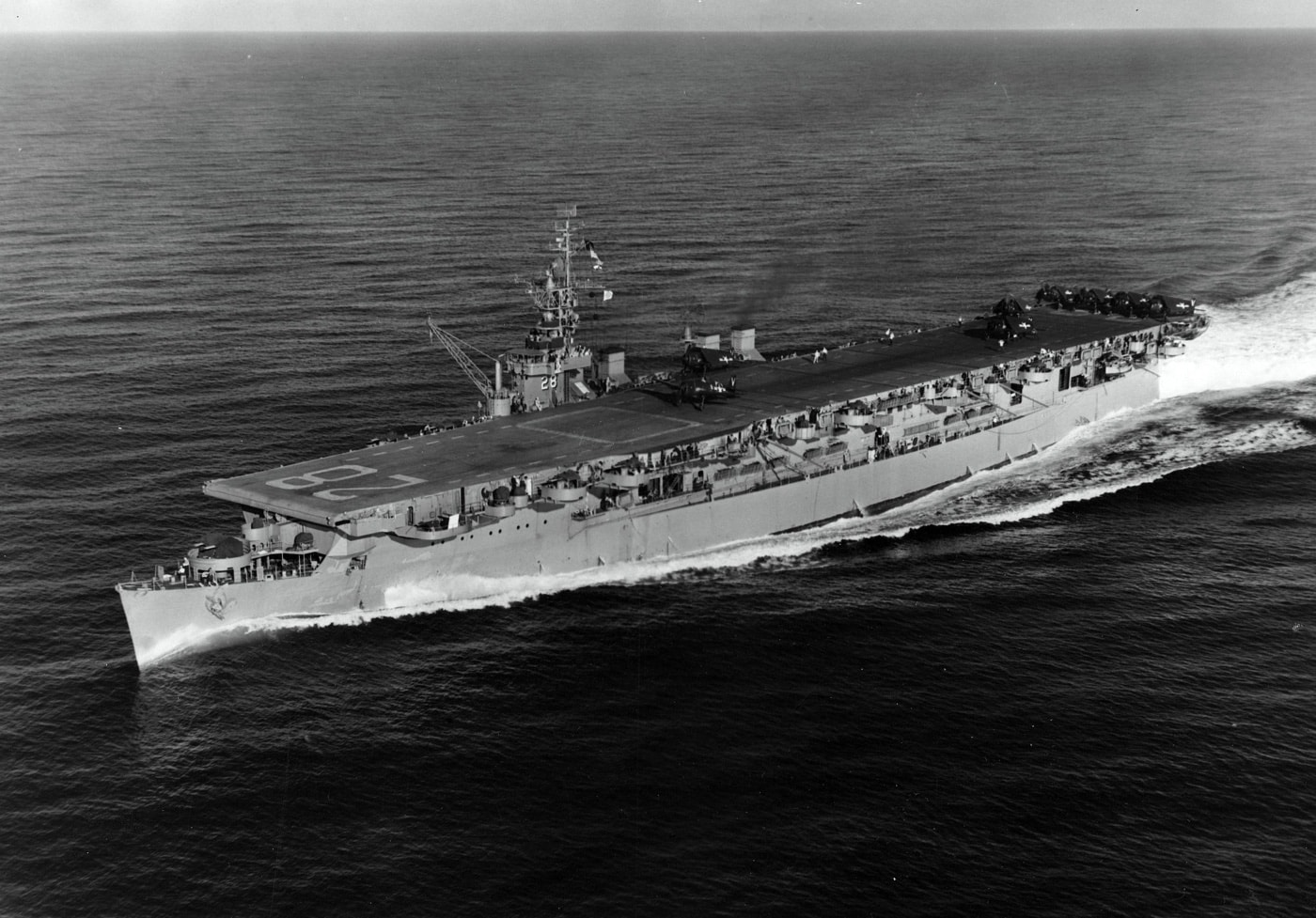
USSCabot(CVL-28) during World War II. She was the final Independence-class carrier to be sold for scrap after serving for decades in the Spanish Navy.
These early U.S. Navy carriers proved vital in the development of carrier aviation tactics.
The conversions of two ships took fewer than six months to complete.
Thus, the concept to convert cruisers to stopgap carriers had merit, at least in concept.
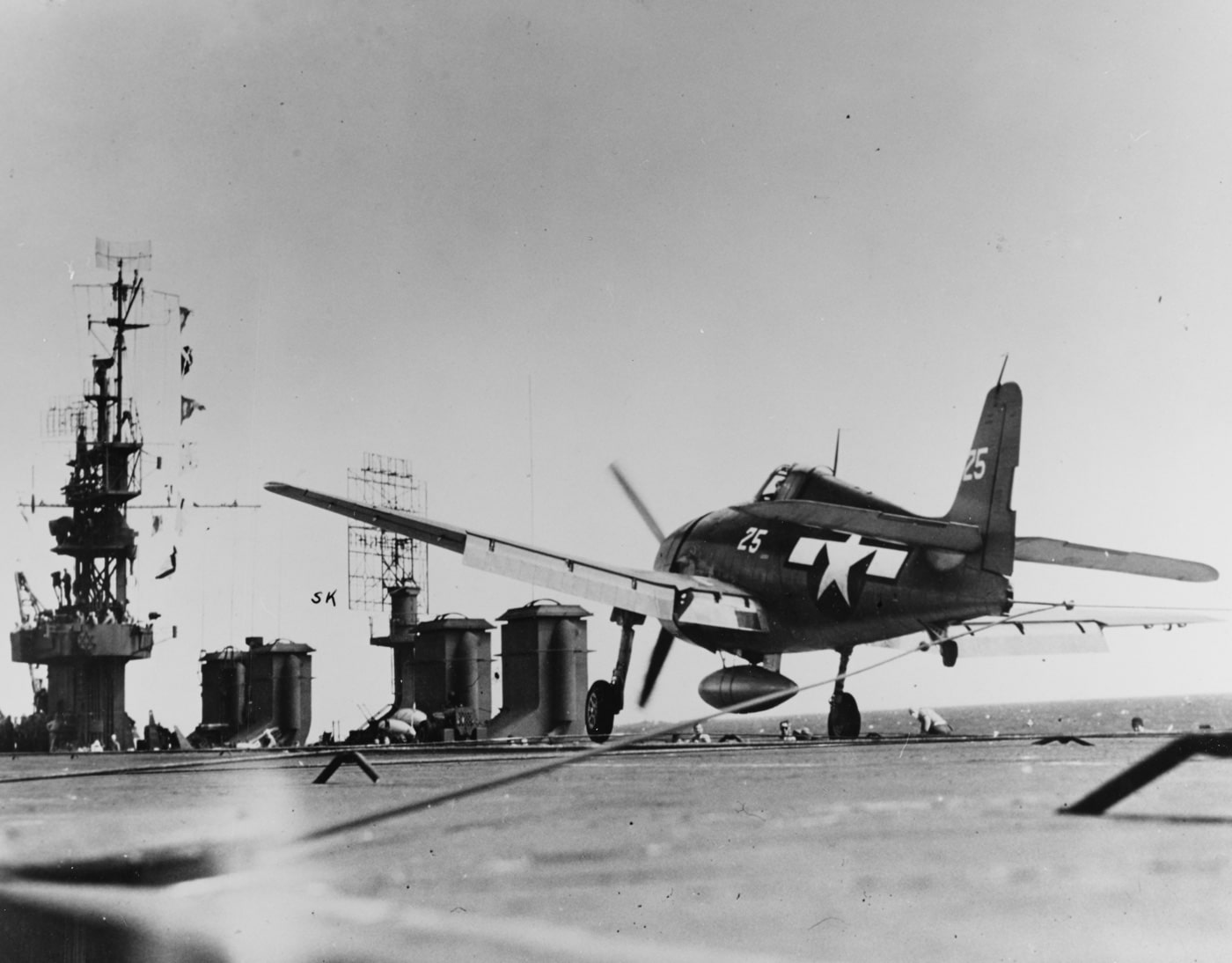
AnF6F Hellcat fighterlands on the USSCowpens(CVL-25) during combat operations in November 1943. Image: U.S. Navy
Though it had the support of Roosevelt, the admiralty noted several limitations and actually objected.
However, the order still came from the president aka the commander-in-chief so there was no actual discussion.
The thinking was that such a conversion resulted in too many compromises for the ship to be effective.
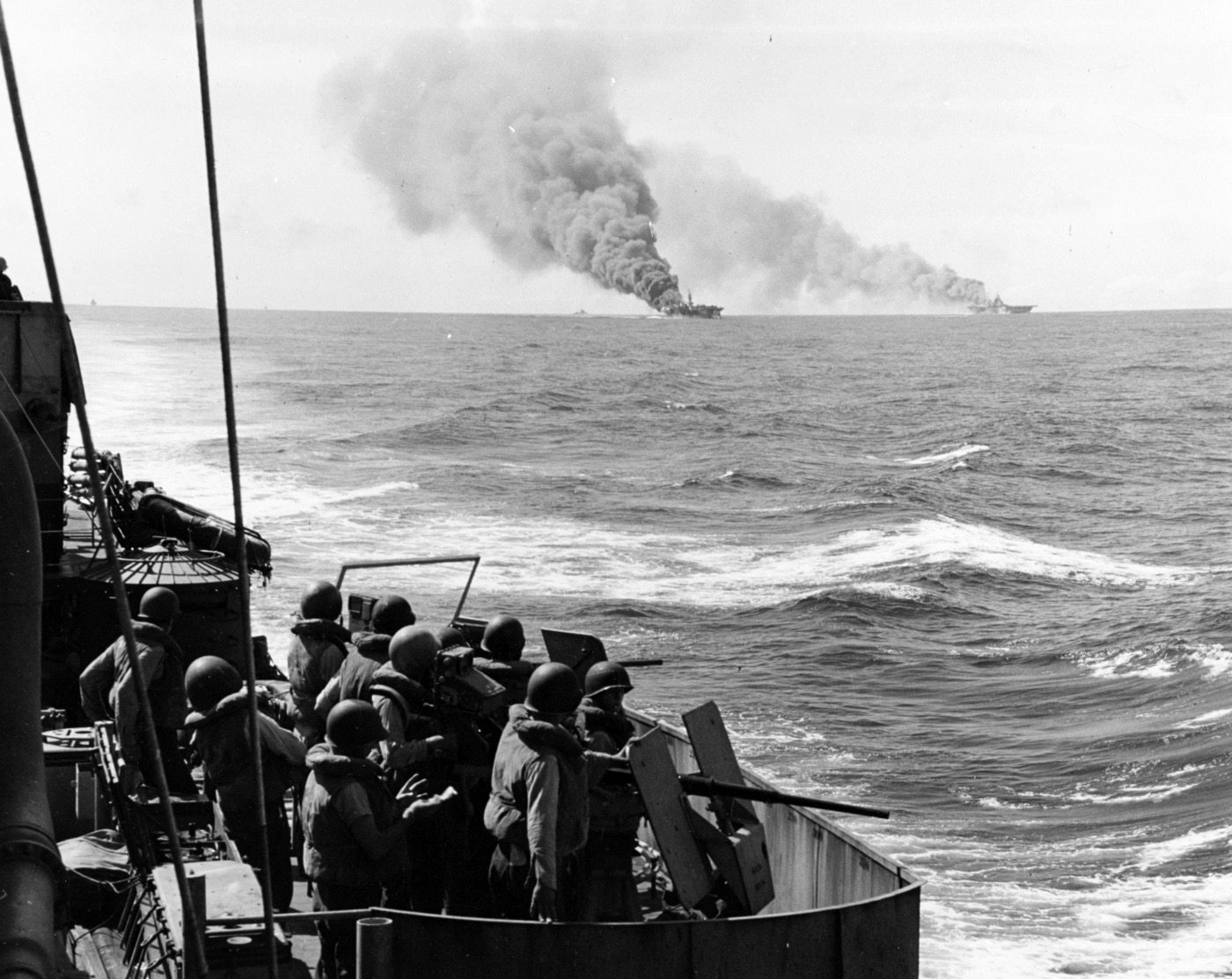
USSBelleau Wood(CVL-24), center, and USSFranklin(CV-13), right, are seen on fire after being hit by Japanese kamikaze attacks off the Philippines on 30 October 1944. Image: U.S. Navy
Roosevelt ordered another study.
The BuShips worked around the clock finding ways to include a hanger that could accommodate a larger air group.
In hindsight, it remains a questionable decision.

Shortly after completion, the USSIndependence(CVL-22) steams under its own power. Image: U.S. Navy
The hanger could hold 30 aircraft one-third that of anEssex-class air group.
No one would likely call the Independence class a handsome vessel.
Arrival of the Converted Carriers
The lingering question is whether theIndependence classwas actually a wasted effort.
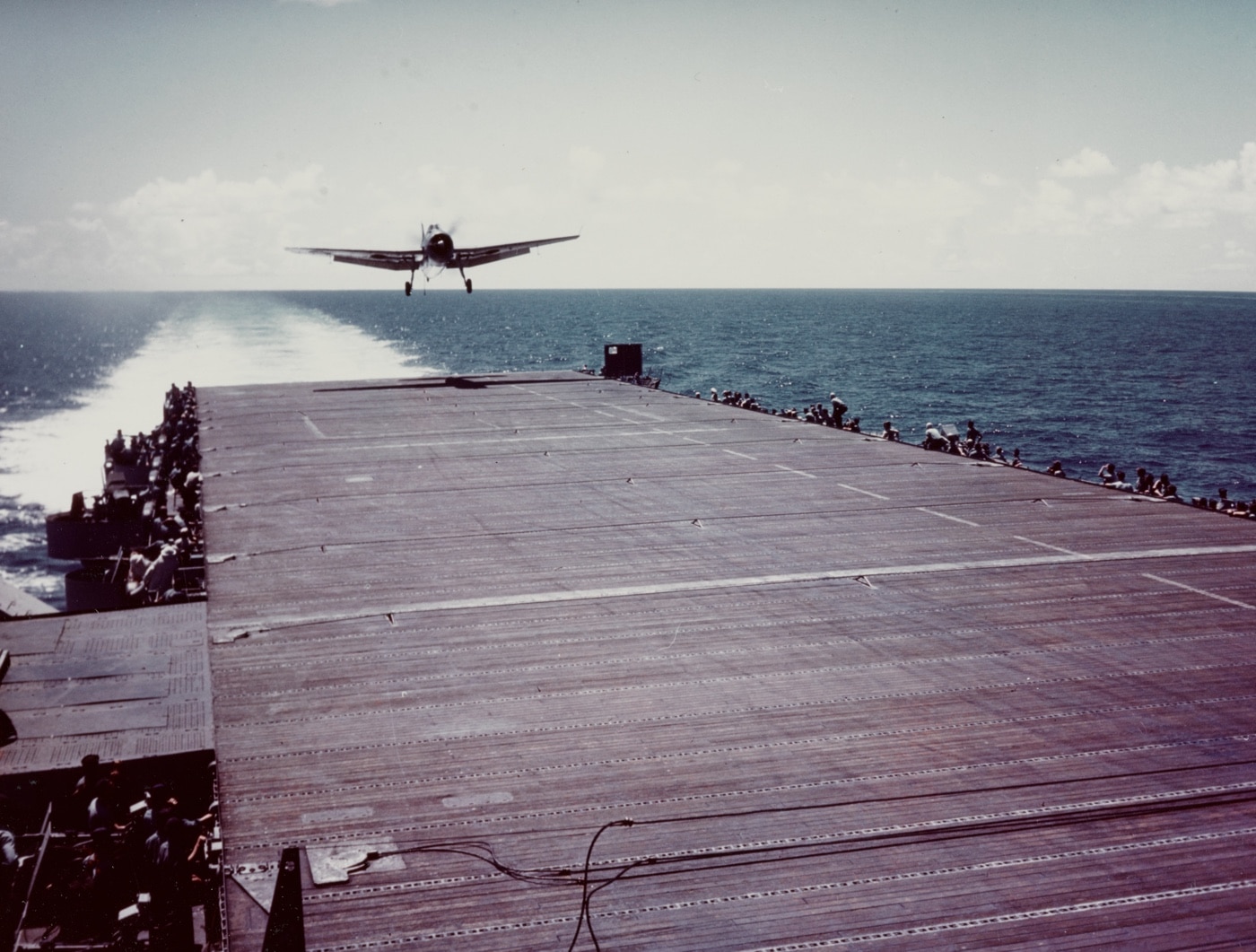
A TBF Avenger torpedo plane lands on the USSCowpens(CVL-25) during late 1943. The flight deck barrier has been rigged in the foreground. Image: U.S. Navy
By that timeUSS Essex(CV-9) was also in service, thanks to an accelerated construction.
Even with a smaller air wing, the accident rate was higher on the light carriers.
For those reasons, rookies were often sent to the newEssex-class CVs rather than the CVLs.
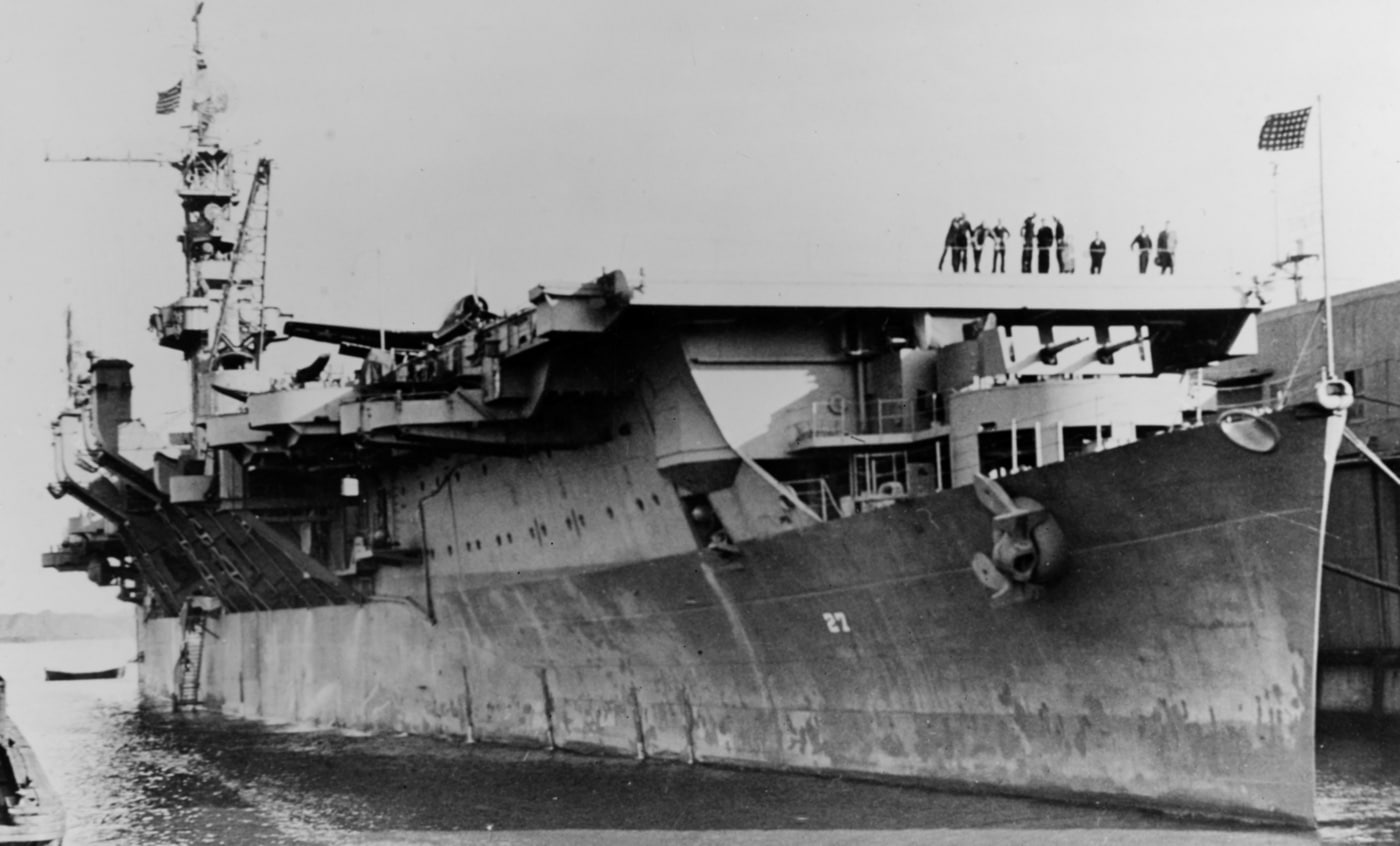
The USSLangley(CVL-27) entered service in August 1943. After being decommissioned in 1947, the aircraft carrier was transferred to France where it served as theLa Fayetteuntil 1963. Image: U.S. Navy
She was severely damaged during a Japanese air attack during the Battle of Leyte Gulf in October 1944.
Though the structural damage was actually minor, a fire broke out and quickly spread.
She had still earned nine battle stars for her service.

The USSSan Jacinto(CVL-30) is shown here with one of the U.S. Navy’s ship camouflage patterns. Image: U.S. Navy
Post-War Needs, or Not?
All were decommissioned as the service returned to peacetime levels.
She actually survived the nuclear blast and was later used as a radiation research hulk for several years.

The U.S. Navy employed a variety of ship camouflage patterns like this one shown on anIndependence-class carrier. Image: NARA
The retired warship was finally expended as a target and scuttled off San Francisco in 1951.
Each was eventually broken up, with CVL-30 being scrapped in 1971.
The USSCabot(CVL-28) actually had the most colorful post-WWII career.

Marines line up on the flight deck of the USSCowpens(CVL-25) for physical fitness training in 1943. Planes on the flight deck include the F6F Hellcat, SBD Dauntless and TBF Avenger. Image: U.S. Navy
This required that the wooden flight deck was covered with protective metal sheathing.
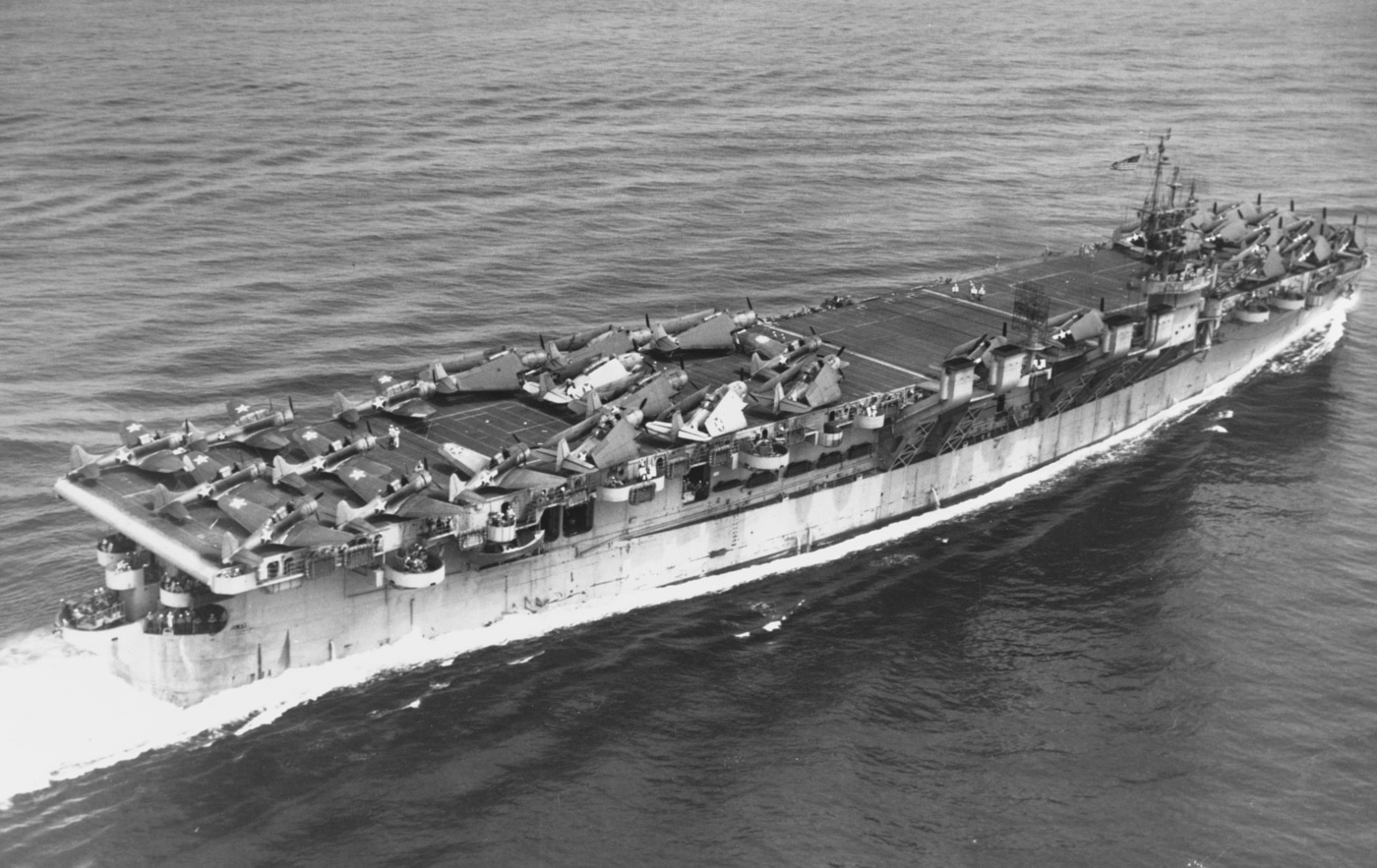
The USSCowpensunderway in July 1943. EachIndependence-class carrier was home for about 30 aircraft — typically 20 or so fighters and nine torpedo bombers. Image: U.S. Navy

The USSIndependence(CVL-22) hauls in her anchor at the Mare Island Navy Yard, California, on 13 July 1943. Image: NARA
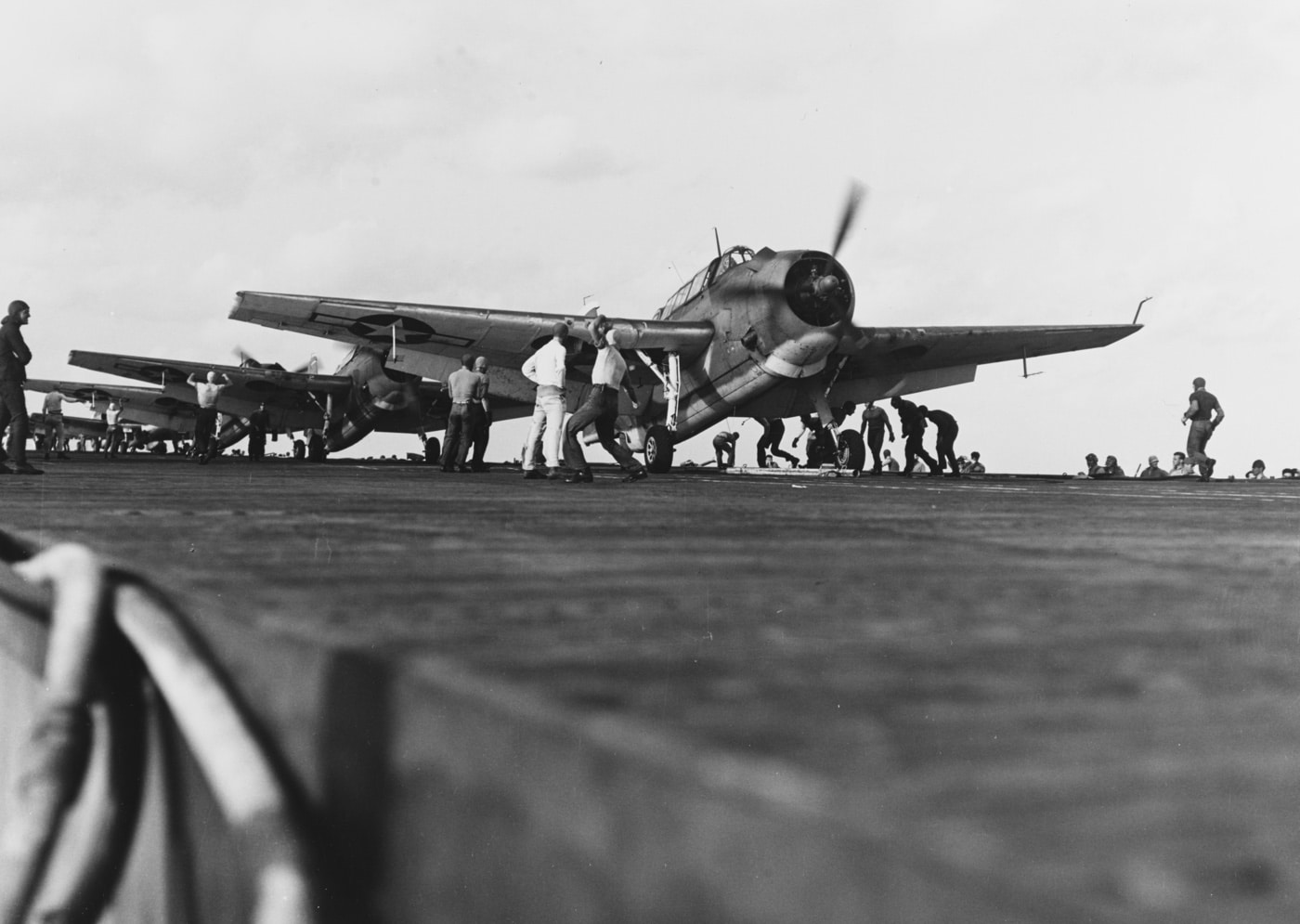
A TBF Avenger is readied for launch from the USSLangley(CVL-27) during operations in the vicinity of Nansei-Shoto, off China Coast, in October 1944. Image: U.S. Navy
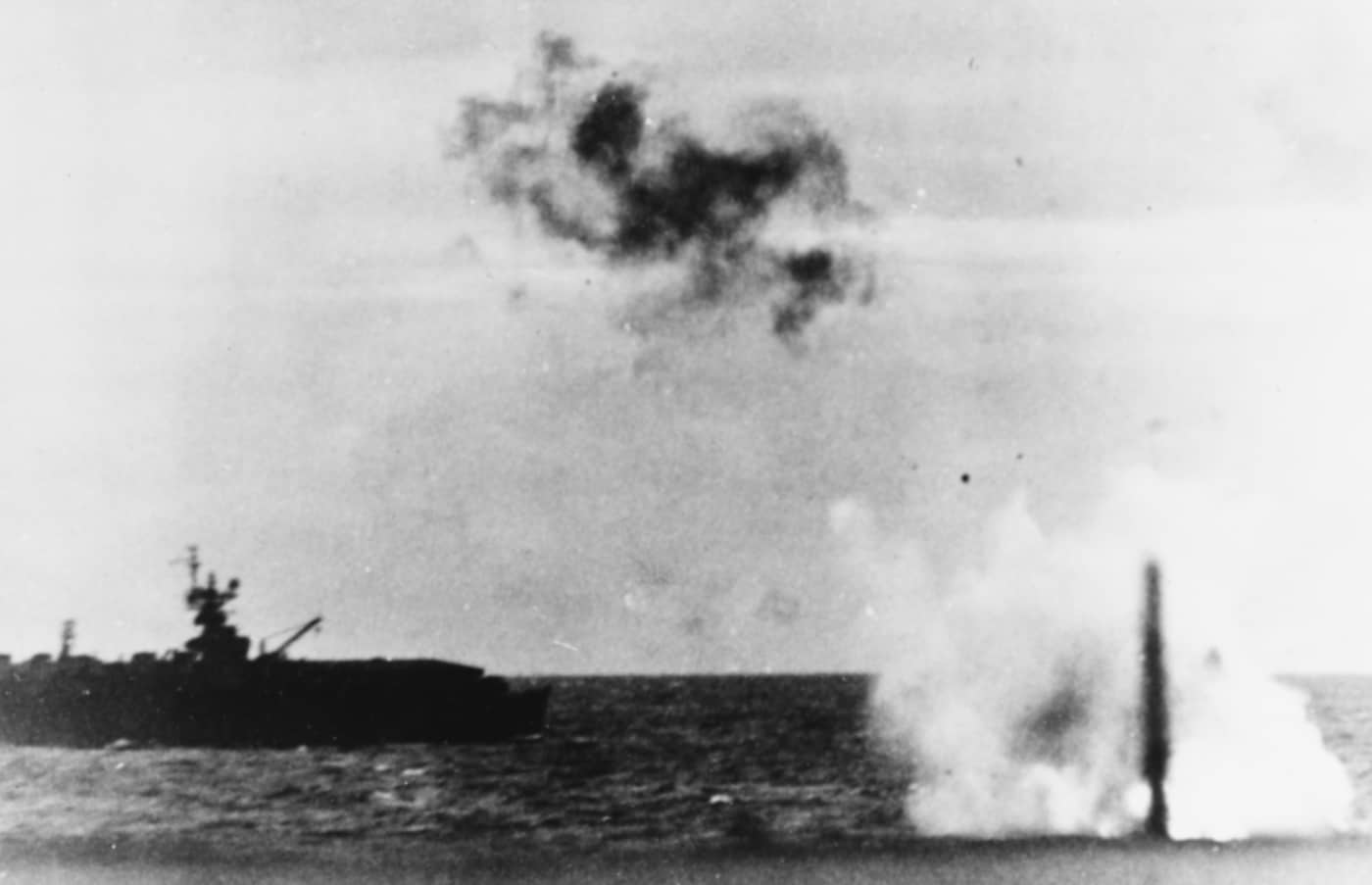
A Japanese torpedo plane crashes into the sea, nearly striking the USSMonterey(CVL-26) during an attack in April, 1944. The USSCabot(CVL-28) is seen on the left side of the photo. Image: U.S. Navy
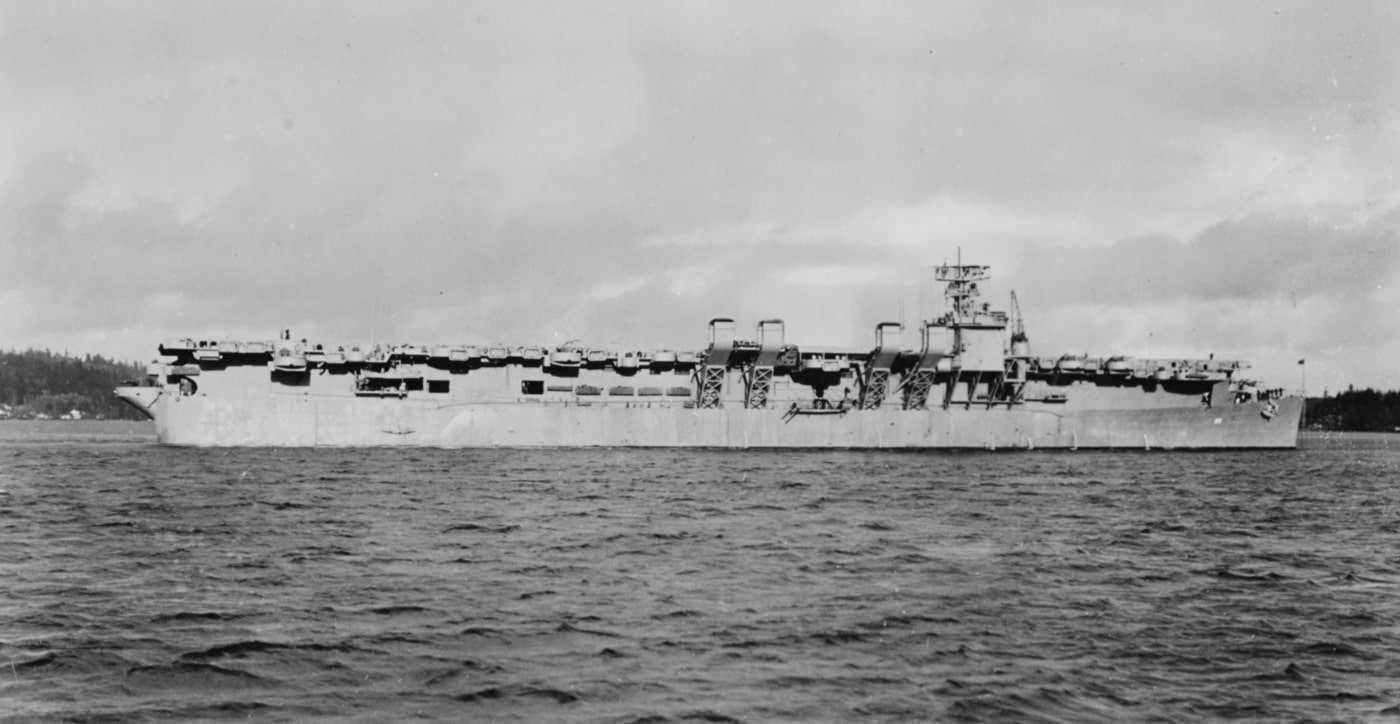
The USSPrinceton(CVL-23) was the only Essex-class light carrier lost during the war. It received nine battle stars before it was hit by a Japanese dive bomber and was scuttled in October 1944. Image: U.S. Navy
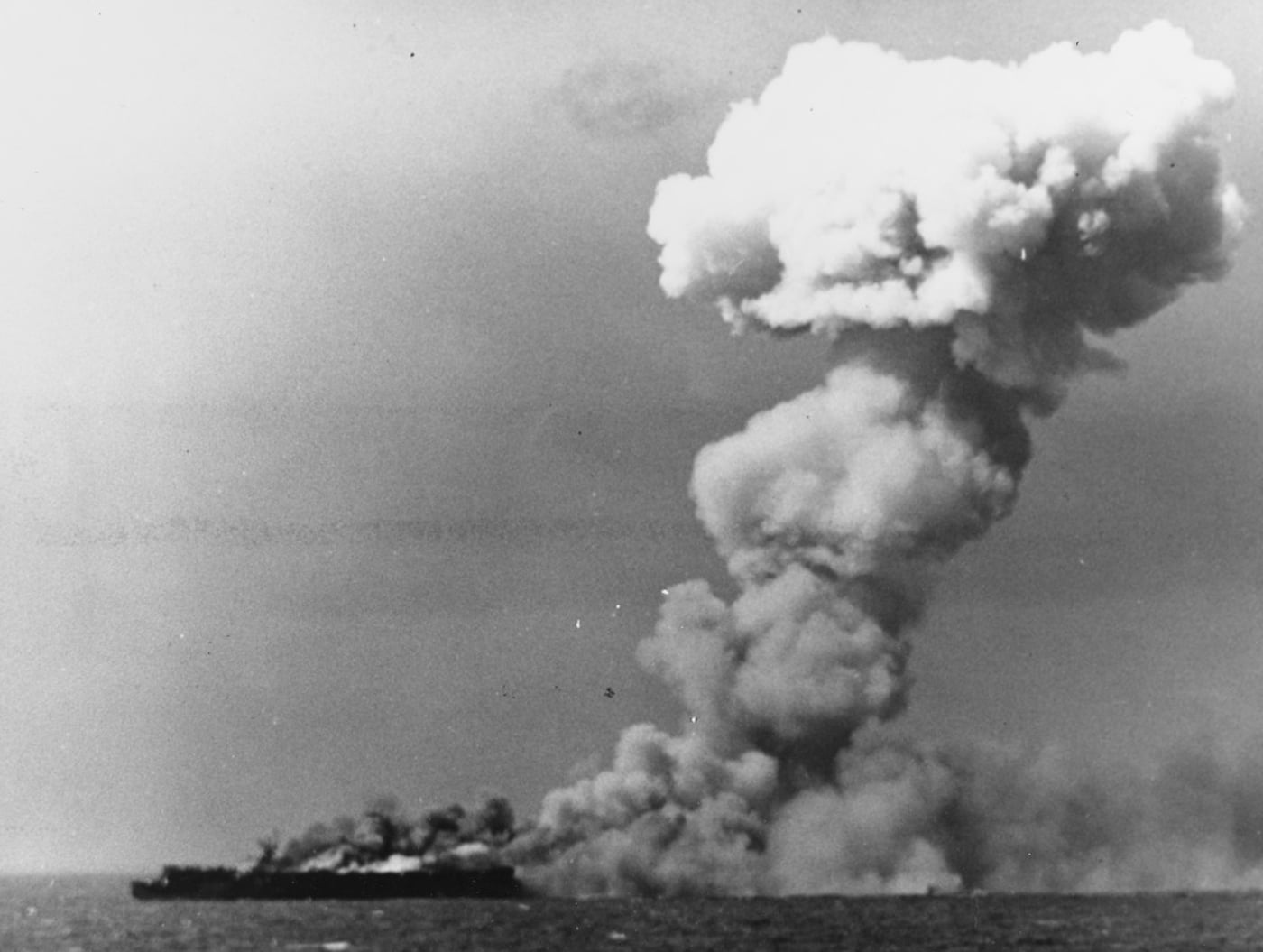
The USSPrinceton(CVL-23) on October 24, 1944, after a Japanese dive bomber hit her. The initial damage was minor, but it caused a fire that consumed the ship. Image: U.S. Navy
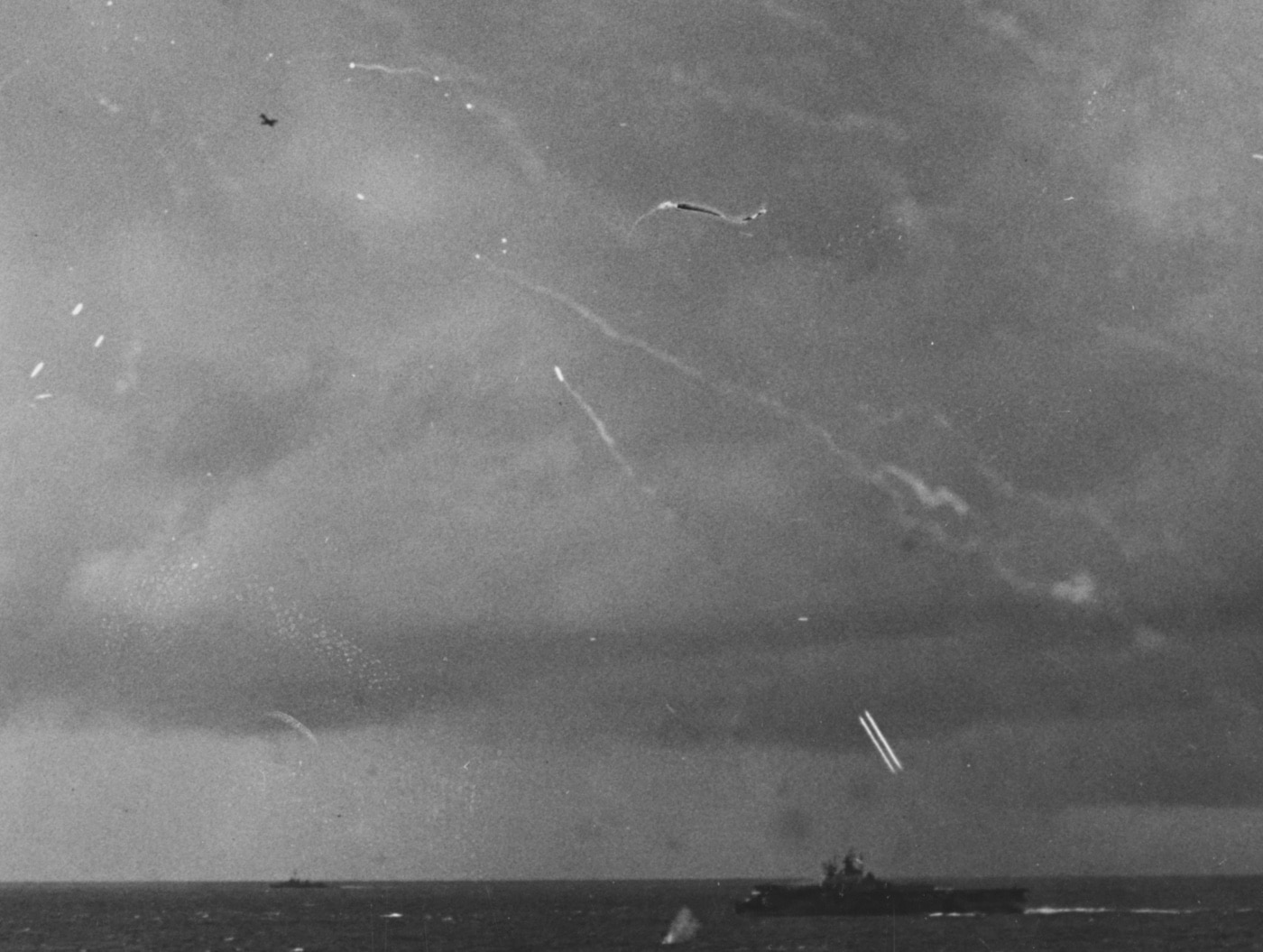
Japanese plane, upper left, dives to attack the USSLangley(CVL-27) on 24 October 1944. The photo was taken from the deck of the USSLexington(CV-16,) anEssex-class carrier. Image: U.S. Navy
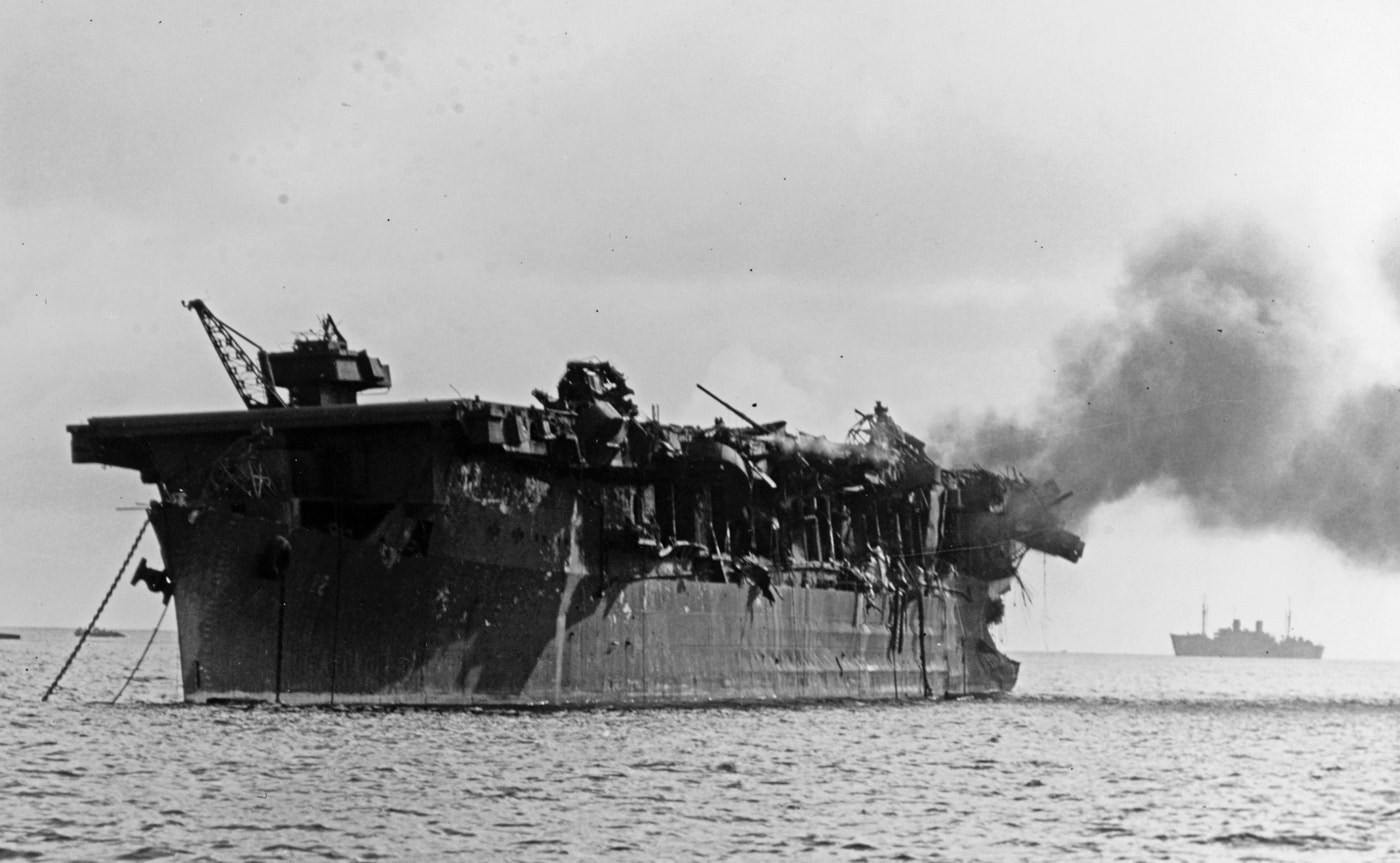
The USSIndependence(CVL-22) sits anchored with substantial damage and on fire after being used in an atomic bomb air burst test at Bikini Atoll in July 1946. Image: U.S. Navy
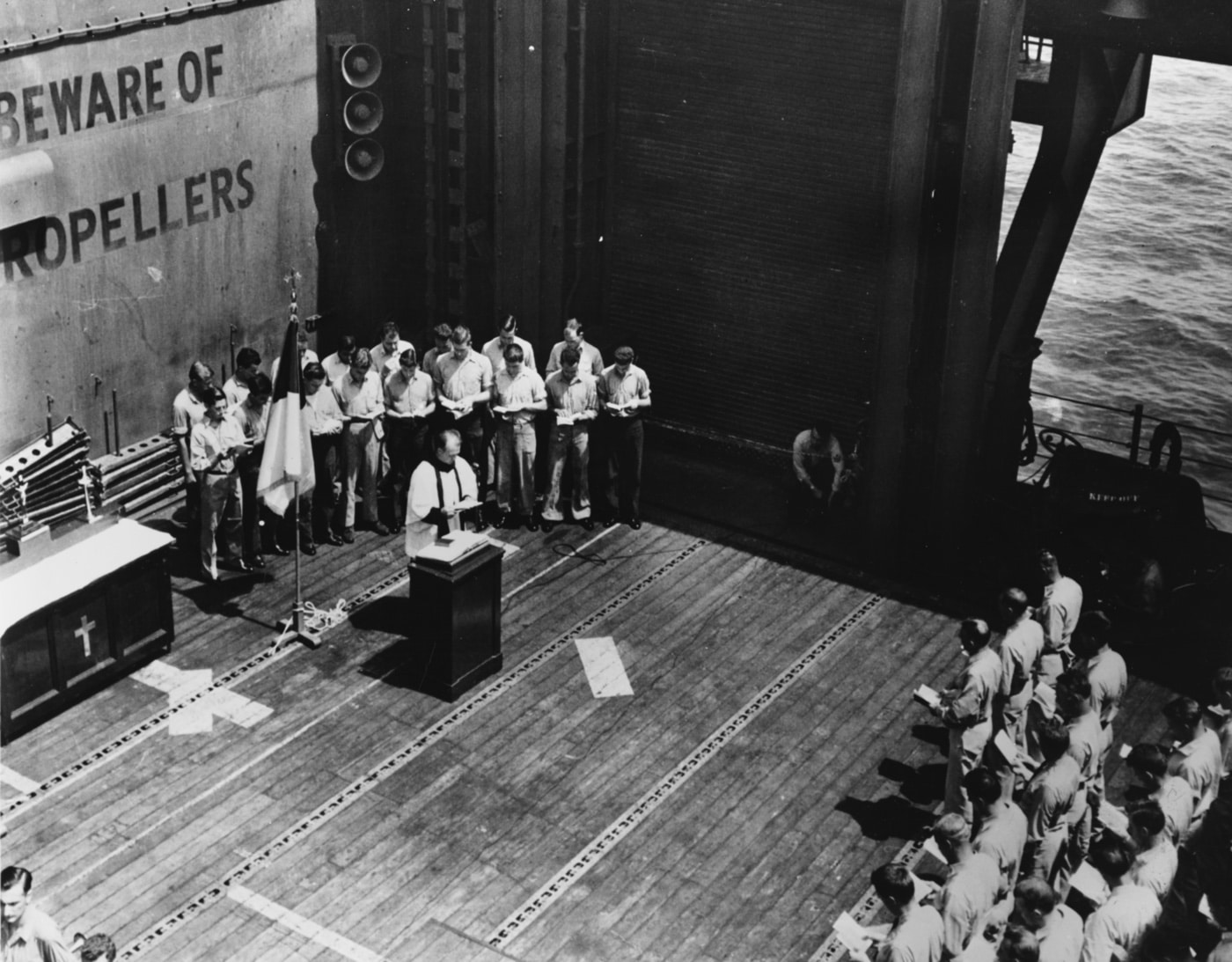
Though small, the light carriers were home to nearly 1,500 men. Here, the Catholic Mass is celebrated on an airplane elevator of the USSLangley(CVL-27). Image: U.S. Navy

The USSPrinceton(CVL-23) at the Puget Sound Navy Yard in Bremerton, Wash. Image: U.S. Navy
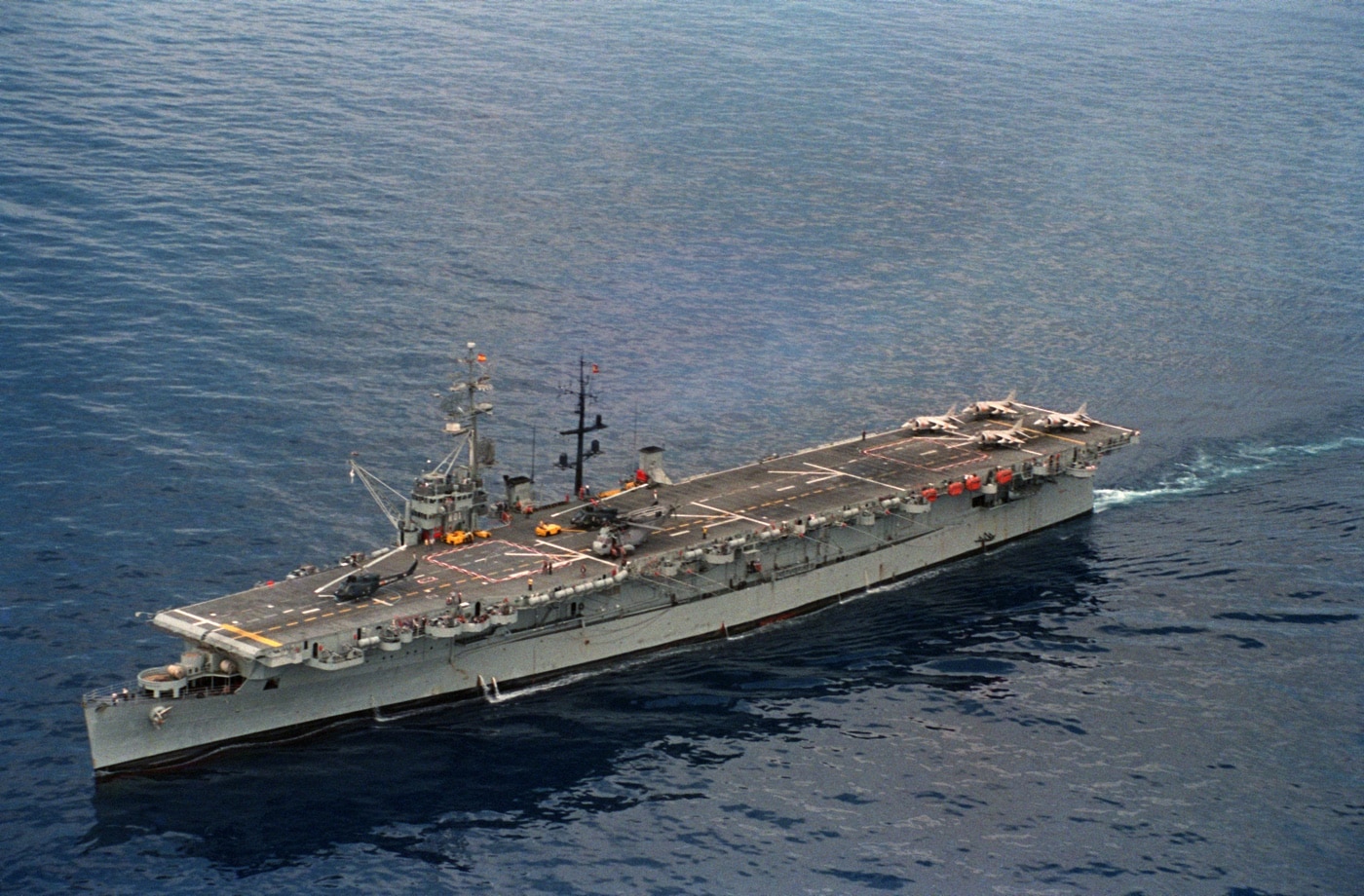
The Spanish Navy carrierDédalo— formerly the USSCabot(CVL-28) — was Spain’s flagship and was one of the last World War II carriers in service. Image: Lt. Cmdr. John R. Leenhouts/U.S. Navy




